SpaceX’s preparations for Starship Flight 5 continue to focus on replacing the Starship 30 heat shield as teams prepare to deploy Booster 12 for a static fire next week. Meanwhile, long-term planning focuses on building Pad B at the launch site.
Orbital Launch B
SpaceX is currently building Orbital Launch Platform (OLP) B, while teams have deployed Tower Module 1 at the launch site.
However, the corner adapters still need to be put in place. With Hurricane Beryl currently threatening the area, crews have also been putting down the CC8800-1 to protect it from the storm.
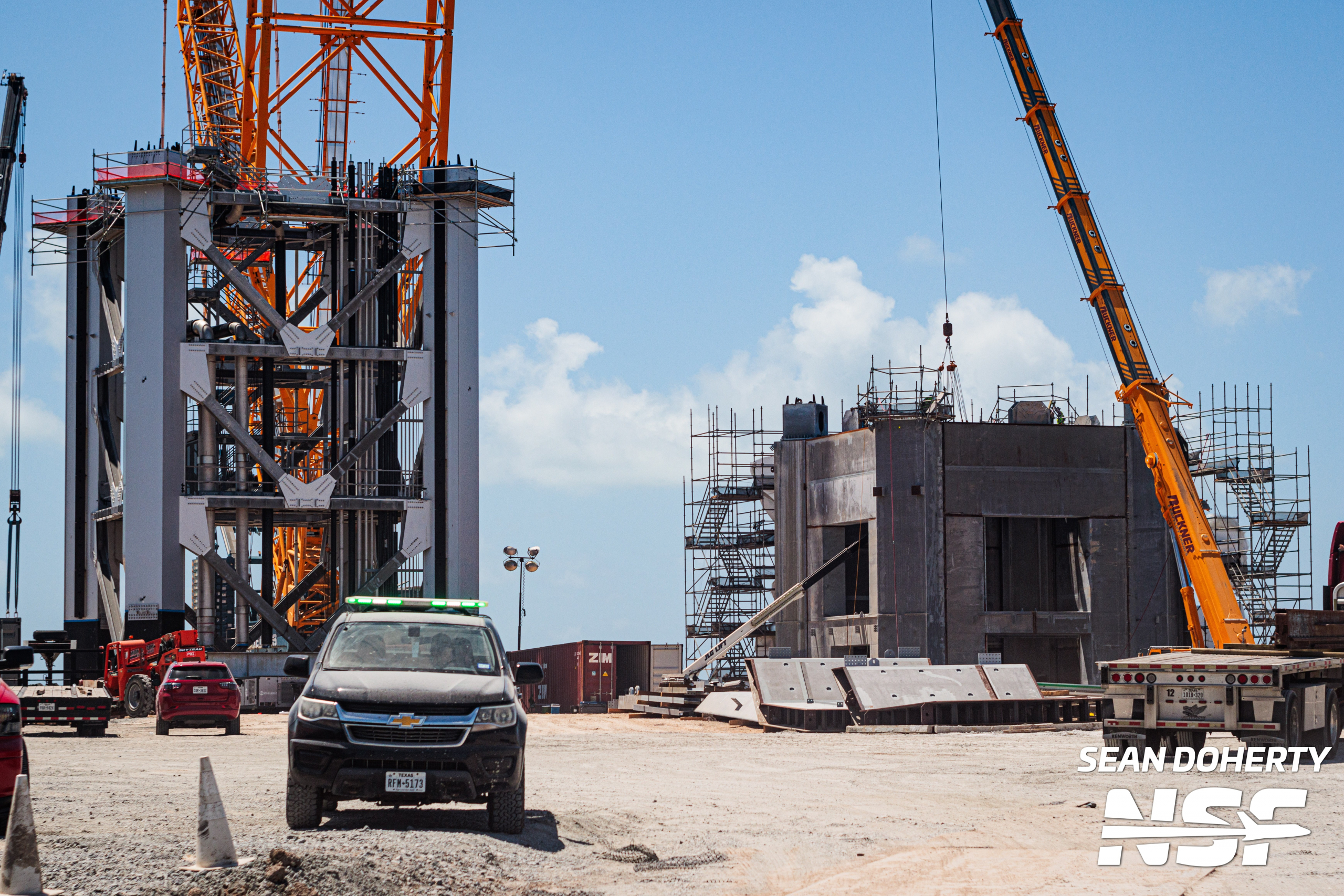
Orbital Launch B and Tower Module 1 (Credit: Sean Doherty for NSF/L2)
SpaceX also took a different approach with this tower in terms of how the base is designed and stacked compared to the original tower next door. SpaceX built an entirely concrete and rebar base with the first tower before adding steel plates after Flight 2. Pad B will be a hollow steel structure filled with concrete, giving it the necessary strength and protection from exhaust gases during launches.
Another change is that teams added the commodity lines and cryogenic propellant lines inside the modules at Sanchez before the modules were rolled and stacked at the launch site.
Currently, SpaceX is only missing two towers from Sanchez. These are now at the Port of Brownsville waiting to be transported to Sanchez, along with the arms and trolley from Florida.
During Tim Dodd’s tour of Starbase, SpaceX CEO Elon Musk mentioned that this tower would be taller than the one currently located on Pad A. However, according to Federal Aviation Administration (FAA) documentation, SpaceX wants this tower to be built by mid-August. So far, no additional tower columns have been built, so this seems unlikely.
Ship 31 underwent cryogenic testing (again)
After spending about seven weeks in the High Bay following a small explosion and electrical fire in its raceway, Ship 31 was brought back to Masseys to complete its cryogenic testing. During the deployment, SpaceX reportedly replaced the entire raceway and repaired any other damage caused by the anomaly.
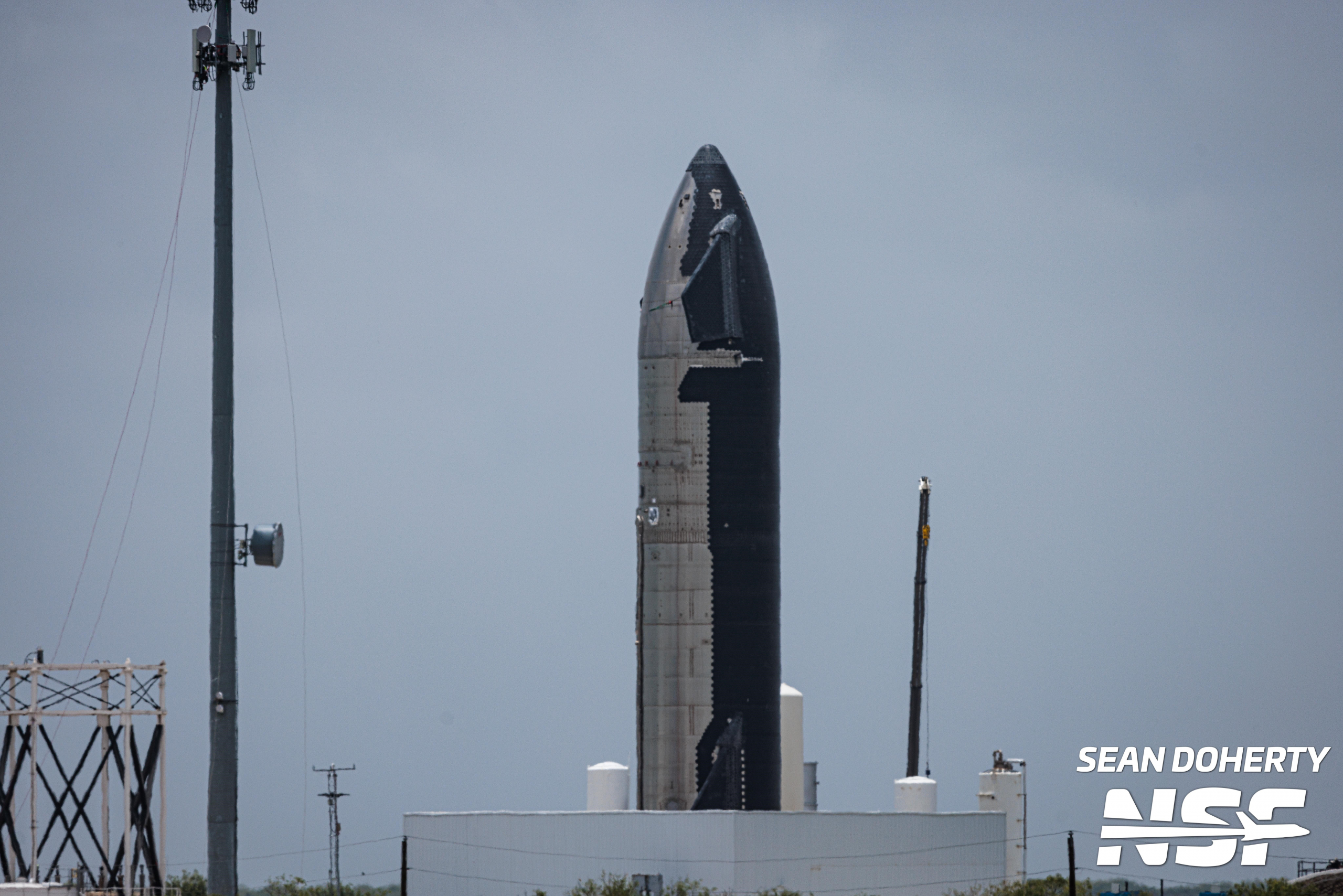
Ship 31 at Masseys (Credit: Sean Doherty for NSF/L2)
Once at Masseys, Ship 31 will conduct two cryogenic tests, including testing the new liquid oxygen valve found on these latest ships. With Hurricane Beryl on the way, SpaceX will most likely return Ship 31 to the high bay before a possible landing to protect the ship.
Depending on the Starship’s readiness, Starship 31 could be ready for static firing tests in two to three months. After that, SpaceX could still replace its entire heat shield, as it did with Starship 30. If that’s the case, Starship 31 might not be ready to fly until October or November of this year at the earliest.
Possible deployment of Booster 12 and Static Fire
Booster 12, which has been in Mega Bay 1 since January 23, is scheduled to deploy to the Orbital Launch Mount (OLM) as early as July 8 or 9. However, depending on Hurricane Beryl, that deployment could be pushed back a few days if Highway 4 floods.
In addition to the intermittent shutdowns, SpaceX has requested shutdowns for testing on July 9, 10 and 11. All three days are from 8 a.m. to 8 p.m.
This deployment would involve Booster 12 performing a 33-engine static firing and likely backing off while its other half is ready for full-stack testing. SpaceX likely won’t place the Hot Stage ring on Booster 12 for a static firing deployment and will instead use the new white booster cap to help keep the forward dome clean and covered.
Ship 30 Heat Shield Work
In recent weeks, SpaceX has replaced the Starship 30’s heat shield and added new ablative material and stronger tiles. So far, it appears that the Starship’s tank sections will now have four layers of material. The flaps will also receive the Pyron material.
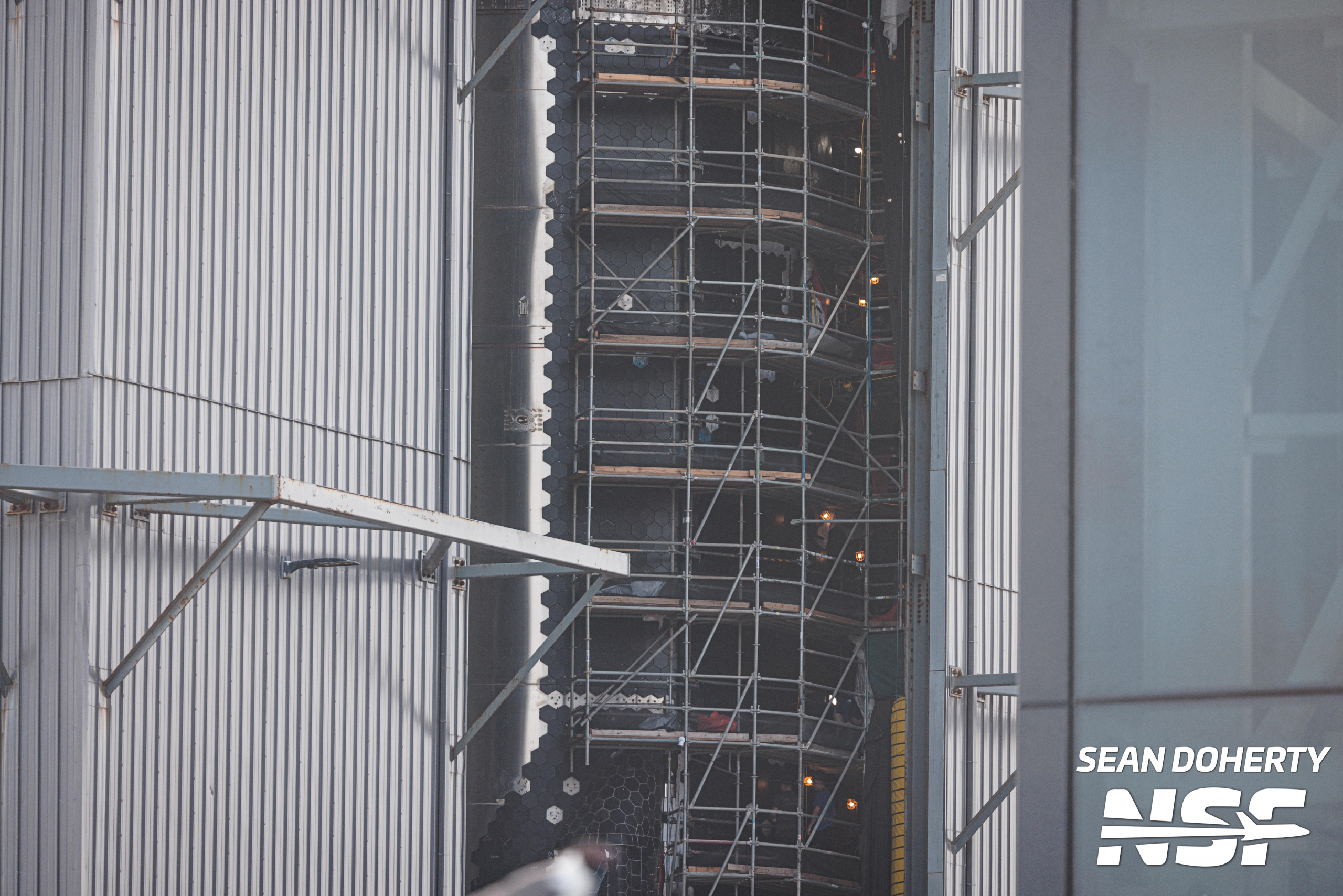
Tiling work on Ship 30 (Credit: Sean Doherty for NSF/L2)
The first layer is what looks like Pyron, a carbon fiber material that will act as an ablative layer on the primary structure in the event of failure of the primary heat shield, the tiles. The next two layers are the felt blankets and mesh material that were already part of the heat shield up until now. These provide insulation and a stabilizing material to help ease the tiles into place on the pins. Finally, the primary heat shield is the tiles.
So far, the new tiles don’t appear to have any noticeable visual changes and function similarly to the old ones. With this upgrade, SpaceX can lose tiles on the ship, but have a backup layer to ensure the ship successfully reenters the atmosphere.
In addition to the addition of Pyron, the teams added new types of gap fillers to the nose cone and flap tiles. What appears to be stainless steel tape and a blue RTV silicone adhesive were added to fill some of the gaps. RTV is a room temperature curing silicone. It cures at room temperature and, depending on the mix, can withstand temperatures up to 650 degrees Fahrenheit.
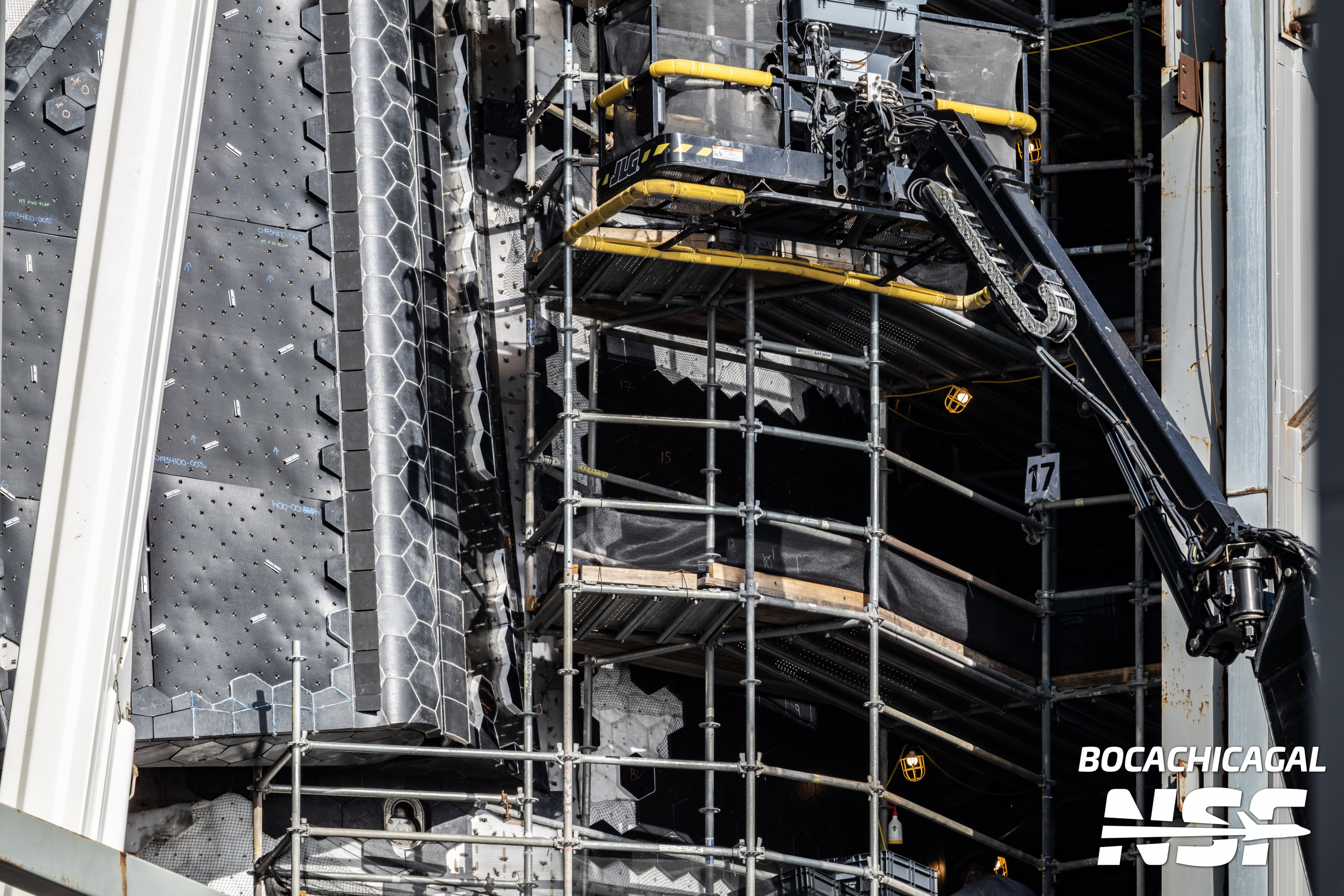
Tiling work on the nose of Ship 30 (Credit: Sean Doherty for NSF/L2)
SpaceX still has some way to go to complete the Ship 30 heat shield, and once complete it must be transported to Masseys’ new static firing range to test the new Raptor vacuum engine that has been installed.
Orbital Launch A
At the launch site, SpaceX removed all of the old vertical tanks from the Orbital Tank Farm (OTF). SpaceX had already fully transitioned to horizontal tanks for Flight 4.
SpaceX has two new liquid methane tanks, currently stored at Sanchez. These could be moved into open space to increase capacity as SpaceX plans to connect this tank farm to PLO B once the tower and support are complete.
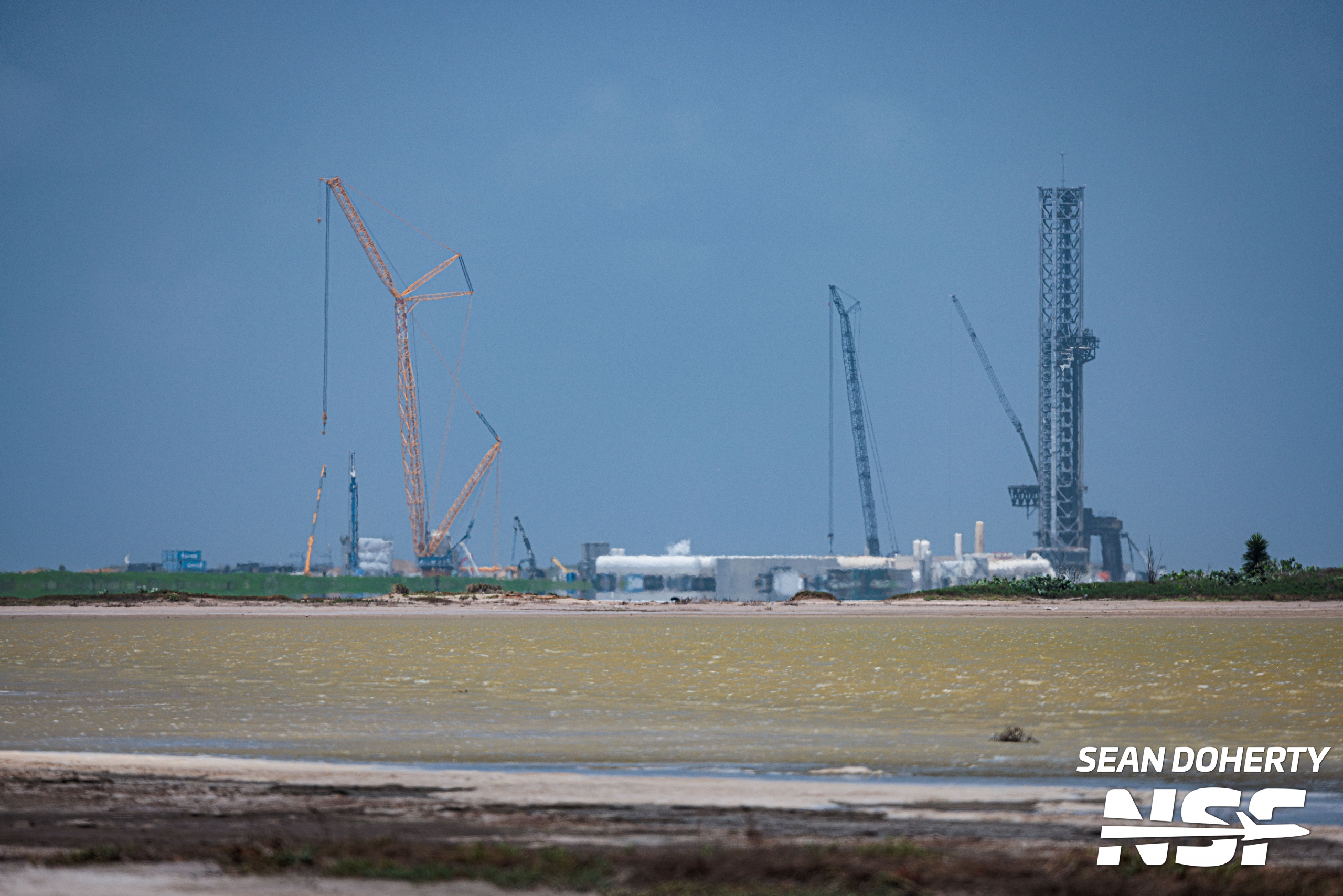
The orbital launch site no longer has its old vertical tanks (Credit: Sean Doherty for NSF/L2)
SpaceX has also been regularly repairing OLP A and upgrading the wands in preparation for capture on Flight 5. Teams have also been working on the Starship’s quick disconnect (QD) arm as one of the main thruster lines was replaced.
The teams still have some work to do to prepare for Flight 5 regarding the PLO and the two vehicles, but it looks like Flight 5 won’t happen until mid-August or possibly September.
Main image: Tower Module 1 awaiting stacking (Credit: Sean Doherty for NSF/L2)
